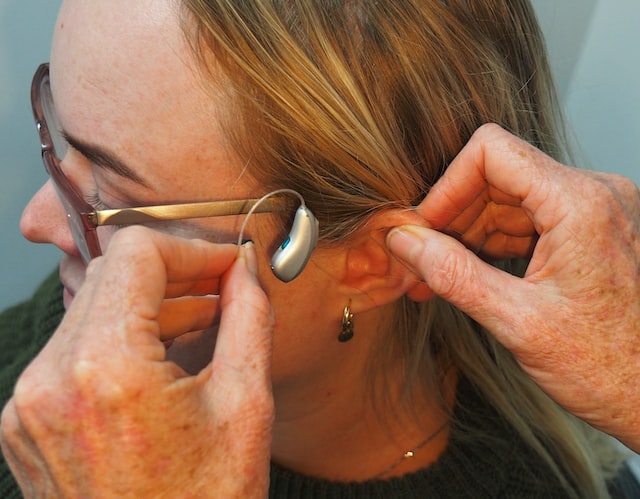The right hearing aid can make a world of difference in your life. But with so many styles, sizes, and technologies to choose from, it can be daunting to know where to start.
The best way to find the right hearing aid for you is by doing your research and talking to your hearing professional. Several factors will help them choose the best fit for you, including your hearing loss, lifestyle, budget, and manual dexterity.
Contents
Cost
The cost of finding the best hearing aids depends on a few factors. They include the brand, technology level, and features.
Generally, the higher the technology level and the more features it includes, the more expensive it is. It’s a good idea to ask about the different technology levels and what they mean for your overall price range before you make any purchases.
It’s also important to consider whether a hearing aid comes with extra services such as an in-person fitting or adjustments by a hearing professional. Some companies include these in the price of their devices, while others charge more for them.
The best way to find out the cost of a hearing aid is to talk to a professional who can assess your needs and recommend the best device. They’ll be able to explain the costs, help you determine what features are essential, and help you decide how much insurance coverage you might have for the cost of your device. They may even offer financial assistance, like financing or healthcare credit.
Technology
Technology is an important aspect of hearing aids. It can help you hear more clearly in noisy environments, such as busy restaurants or crowded meeting rooms.
Modern hearing aids have many features that improve their effectiveness in various situations, including noise reduction and directional microphones. Using digital circuitry, hearing aids can be programmed to adjust their sound amplification and directionality depending on the environment and user’s needs.
In addition, many modern hearing aids are rechargeable. Previously, hearing aid users had to change tiny button batteries, which was a frustrating chore.
Other new features include wireless Bluetooth connectivity, which lets you directly stream audio from devices such as smartphones to your hearing aids. Some hearing aids also have a telecoil, which loops into public sound systems to extend your listening range and eliminate unwanted background noise.
Style
Hearing aids use a microphone and amplifier circuitry to make sounds louder, then send them through a miniature loudspeaker (receiver) into your ear canal. There are many different styles and features to choose from, so it’s important to talk with your hearing care professional about what you need and want before deciding.
Styles range from the smallest, least visible aids that are designed for children and adults with dexterity issues to a completely-in-the-canal (ITC) aid that fits inside your ear canal. Either type can improve mild to moderate hearing loss.
ITC styles range from half-shell designs that fill only half of the bowl-shaped area of the outer ear to full-shell designs that fill the entire lower part of the ear. Both are helpful for people with mild to severe hearing loss and are available with directional microphones that help you hear better in noise.
Behind-the-ear (BTE) hearing aids hook over the top of your ear and rest behind your ear, usually with a tube connecting them to a custom ear mold that fits in your ear canal. They’re suitable for people of all ages and are a good choice for most types of hearing loss.
Warranty
A hearing aid warranty is a form of protection the manufacturer offers to cover repairs and replacement costs. This can be a great benefit, especially if you have an older pair of hearing aids that need much care and attention.
The basic warranty covers repairs that are caused by normal wear and tear or defects in materials and artistry. It also covers damage from accidental exposure to water or heat.
Some vendors offer longer warranties, with coverage that can last two or three years. These extended warranties can be an extra cost, but they can be worth it if you don’t like losing your hearing aids.
Many hearing aids also come with one-time loss and damage coverage, which covers a device if it gets lost or damaged beyond repair. These plans can be a lifesaver for those who often lose or break their devices and worry about paying the cost of a new one.
Insurance
Getting hearing aids is an investment that can have a lifelong impact on your quality of life. It can help you hear everything being said, so you can fully participate in conversations and social situations.
A hearing aid is a small electronic device that picks up sound waves, converts them into electrical signals, and sends them to a speaker. The amplifier and microphone then enhance the sound to make it louder and clearer.
Some insurance plans will cover the cost of a hearing aid. The amount varies by state, so check your policy to see how much coverage you will receive.
Many insurance companies also offer a renewal program that will allow you to upgrade your hearing aids as you need them. Changing your lifestyle can cause your hearing needs to change over time, so this option allows you to choose new devices that address these changes.
Hearing aids can also be very expensive, so it is important to shop around for a good price. Some insurance companies offer discounts to members, and some can lower the price with a discount from the manufacturer.



